by Mike Constanza
Cleats are often seen in the shoes used by soccer and softball players. Furthermore, there is a widespread misperception that cleats are all the same. However, there are significant differences between soccer and softball cleats.
Contents
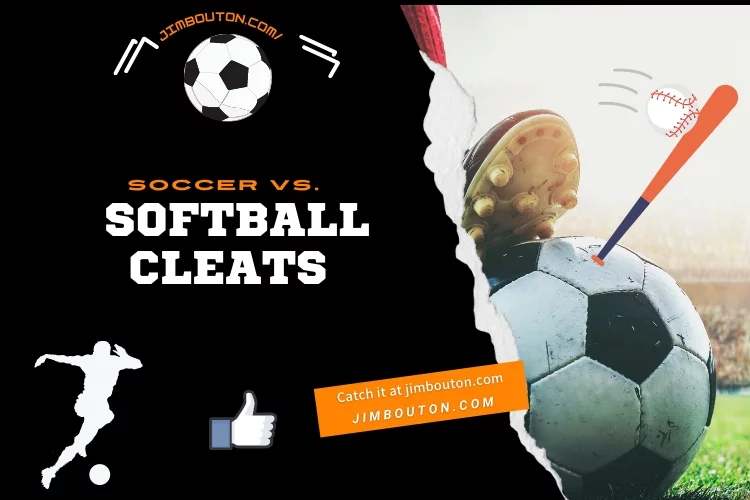
The difference between soccer and softball cleats is very apparent with a single glance. The softball shoes feature cleats in the front, unlike the soccer shoes, which have not. Furthermore, due to the risk that the front cleat poses to others, soccer laws do not permit players to compete in soccer shoes. One more reason is also that soccer players commonly control the ball with their toes and the front of their shoe, and a cleat at the tip would make this impossible.
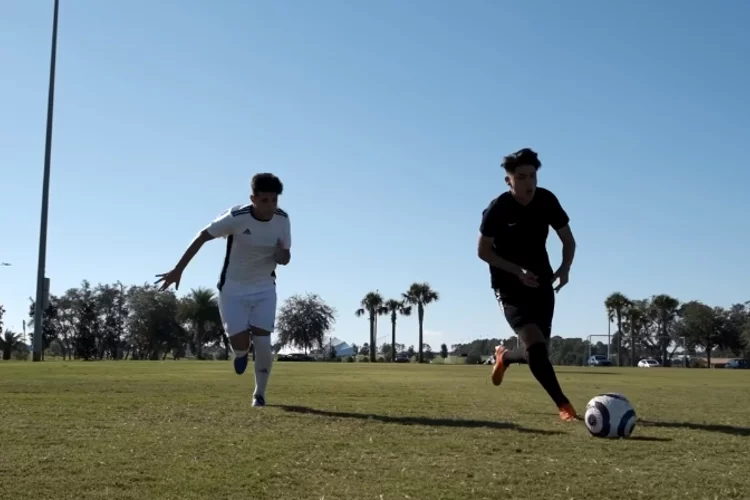
Whereas softball cleats may be high or low top, soccer cleats can only be low top. Furthermore, softball shoes and cleats are larger than soccer shoes as well as cleats.
It could also be noticed that softball cleats provide superior ankle safety than soccer cleats.
The arrangement in which the cleats are positioned in softball and also the soccer shoes differs as well. Softball cleats are arranged in horizontal bands across the shoe's heel, toe, and midsection. Soccer cleats, on the other hand, are positioned more across the perimeter. Soccer shoes, unlike softball shoes, don't even have cleats on the toe.
Soccer cleats are almost always constructed of plastic. Metal cleats may also be seen, however, they are only permitted in a few indoor leagues. Softball cleats may be composed of metal or plastic. As per league regulations, players may wear any of them.
Cleats, in particular, help a player to move quickly on a sports field without sliding. They also help to stabilize the ankles during quick movements. Because of the varying needs of different sports and locations on the field, certain designs allow for a broader range of mobility.
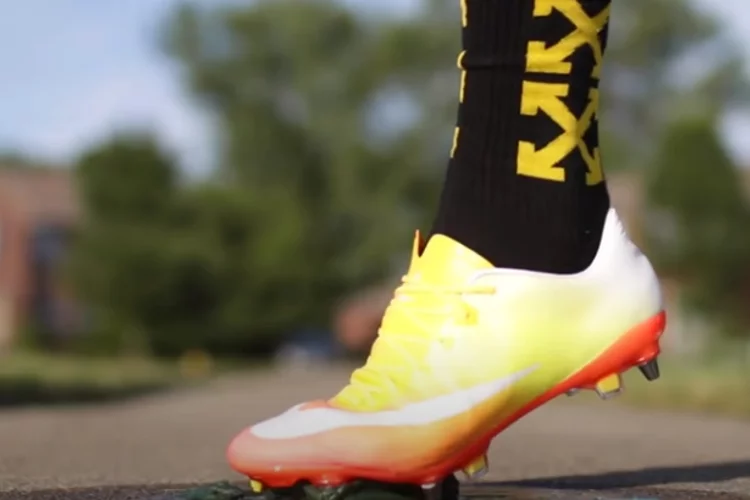
The height and weight of the cleat are the two most important elements of cleats that make them useful for both soccer and softball. These features provide the user with movement and support. Other elements, including such as stud length and substance, also have a role.
Soccer cleats, in fact, are meant to allow for better agility and quick movement patterns, while softball cleats are created for steadiness and support. Many softball players prefer to wear soccer-style cleats when playing the game. In the end, everything comes down to personal choice. Examining the cleats themselves is the quickest approach to determine which model is ideal for you.

Obviously, not all cleats are created equal. Varying ankle cuts and substances may have a significant impact on cleat efficacy. With this fundamental knowledge, we can make intelligent decisions on which cleats to utilize for soccer and softball. But, before we get there, let's have a look at the precise distinctions between the various styles:
Though there are a few variations, the cleat pattern is the most noticeable. Baseball cleats include a cleat on the front of the shoe to give stability when sprinting bases. Soccer cleats lack the additional cleat at the front because players must kick the ball throughout the field. In addition, soccer grounds are usually made of grass, as opposed to clay, which is used to build most baseball fields.
Therefore, the cleat structure between the 2 cleats is determined by the field's material as well as the needs of each activity.
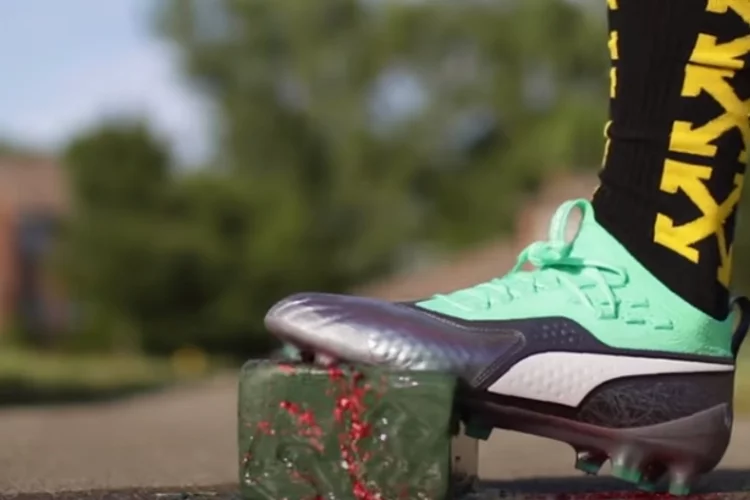
Soccer cleats include plastic / rubber nubs that keep players secure during collision.
Soccer cleats are made of a lightweight, malleable plastic that allows players to feel the ball better, while the material at the top of the cleat is stronger to assist players resist repeated kicks.
Baseball cleats for youth are made of plastic or rubber, but baseball cleats for adults are made of metal.
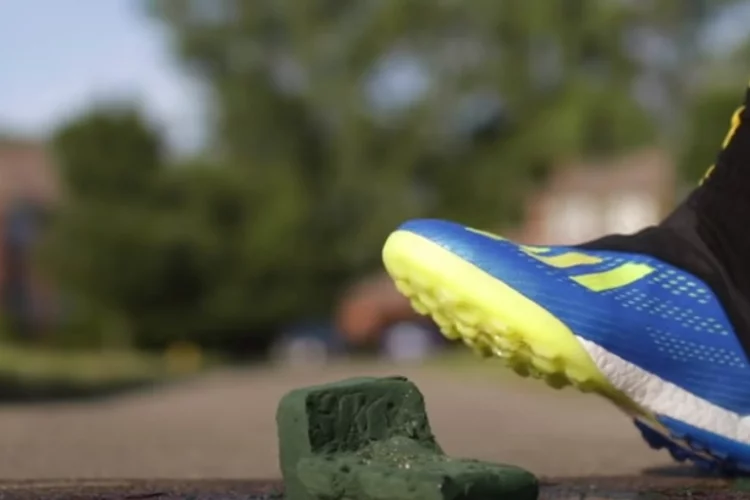
Baseball has lowered the likelihood of contact and, as a result, harm. Baseball cleats are designed for steadiness and traction rather than player safety, as seen by the sharp, thin metallic spikes.
Baseball cleats are not stretchy since they are designed for stability while players can make explosive motions on the field.
Due to the various places on the field, soccer cleats feature diverse stud lengths that assist players in adapting to different playing grounds.
The cleat is small, spherical, and blunt in form.
A spike is located near the toe of baseball cleats. This additional spike is sharp to help players get a good hold. All of the cleats on the shoe seem to be the same length.
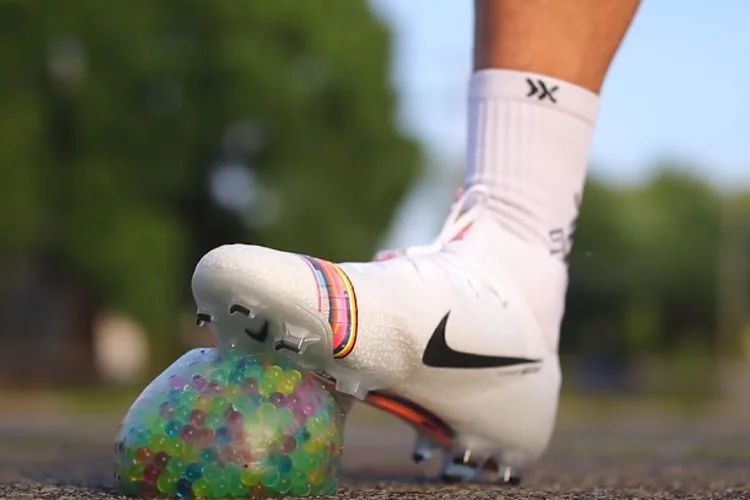
The spikes are bigger and pointier than those seen on soccer cleats. The additional cleat at the toe of the shoe allows the player to sprint and shift direction quickly when going through the bases.
Soccer cleats are designed with a low center of gravity in mind. As a result of eliminating the midsole, soccer cleats are somewhat lightweight than baseball cleats, allowing players running for 90 minutes or more with the speed and agility they need.
The ankle design lacks ankle support, which promotes mobility of foot movement.
Baseball cleats contain an ankle support function and heavier material, such as leather, to help pitchers, power batters, and hard-throwing position players run, slide, and so on. The midsole are included in the sole design, making baseball cleats bulkier and providing players with stability to correctly anchor their lower body.
The table below indicates the major differences between the soccer and softball cleats:
| Parameters | Soccer Cleats | Softball Cleats |
|
|
|
|
|
|
|
|
|
|
|
|
|
|
|
|
|
|
|
|
|
Answer: Lacrosse and softball footwear have toe cleats, which may be dangerous for soccer. Toe cleats help with the quick movements that are common in softball, but they would be still considered dangerous. When compared to true soccer cleats, they give too much stability.
You want a less noticeable stud for soccer then you can make fast moves at the dropping of a hat and maintain pace over greater distances. For such reasons, wearing non-soccer cleats while playing soccer is against the regulations. Utilizing soccer cleats for softball, on the other hand, is perfectly legal. But one thing you have to think about is whether the various styles of soccer cleats and softball cleats will fit your softball demands or not.
Answer: There are no particular rules governing which softball positions may wear which kinds of cleats in softball. Based on their own preferences, players may use synthetic and leather cleats. Several players choose lower-ankle soccer cleats because they provide them with more flexibility. This, however, renders them more susceptible to twisting fractures, which are common in softball.
Answer: While you may use soccer cleats to play softball, it is not recommended. Soccer cleats are lightweight and provide less protection to the upper ankle and foot than softball cleats. Softball is a sport that requires rapid change in direction as well as twisting and turning, thus wearing soccer cleats could increase the chance of injury.
Soccer cleats lack a spike in the toe region, making it difficult to halt and hold the field when wearing them.
Whatever you name them - cleats, baseball shoes, studs, spikes, or just playing shoes - wearing the correct shoes on the playing field is critical. This is true for every sport, whether soccer or softball. These shoes provide players with the grip and stability required to perform powerful movements on the ground, which is especially important when the playing surface is slippery owing to wetness on the grass, loosened gravel, or mud, which may be unsafe to play on.
Finally, if possible, acquire the greatest baseball cleats for your boy or girl. Getting them conventional footwear for playing in the mud and grass will be a stumbling hurdle for them. Also, be sure to break in your new baseball cleats. Also, constantly take proper care of your cleats to guarantee they last a long time.

About Mike Constanza
For years, Mike had always told everyone "no other sport like baseball." True to his word, he keeps diligently collecting baseball-related stuff: cards, hats, jerseys, photos, signatures, hangers, shorts (you name it); especially anything related to the legendary player Jim Bouton.
Mike honorably received Bachelor of Science degree in Business Administration from University of Phoenix. In his graduation speech, he went on and on about baseball... until his best friend, James, signaled him to shut it.
He then worked for a domain registrar in Phoenix, AZ; speciallizng in auction services. One day at work, he saw the site JimBouton.com pop on the for-sale list. Mike held his breath until decided to blow all of his savings for it.
Here we are; the site is where Mike expresses passion to the world. And certainly, he would try diversing it to various areas rather than just baseball.
 |
 |
 |
 |
Today's Deals